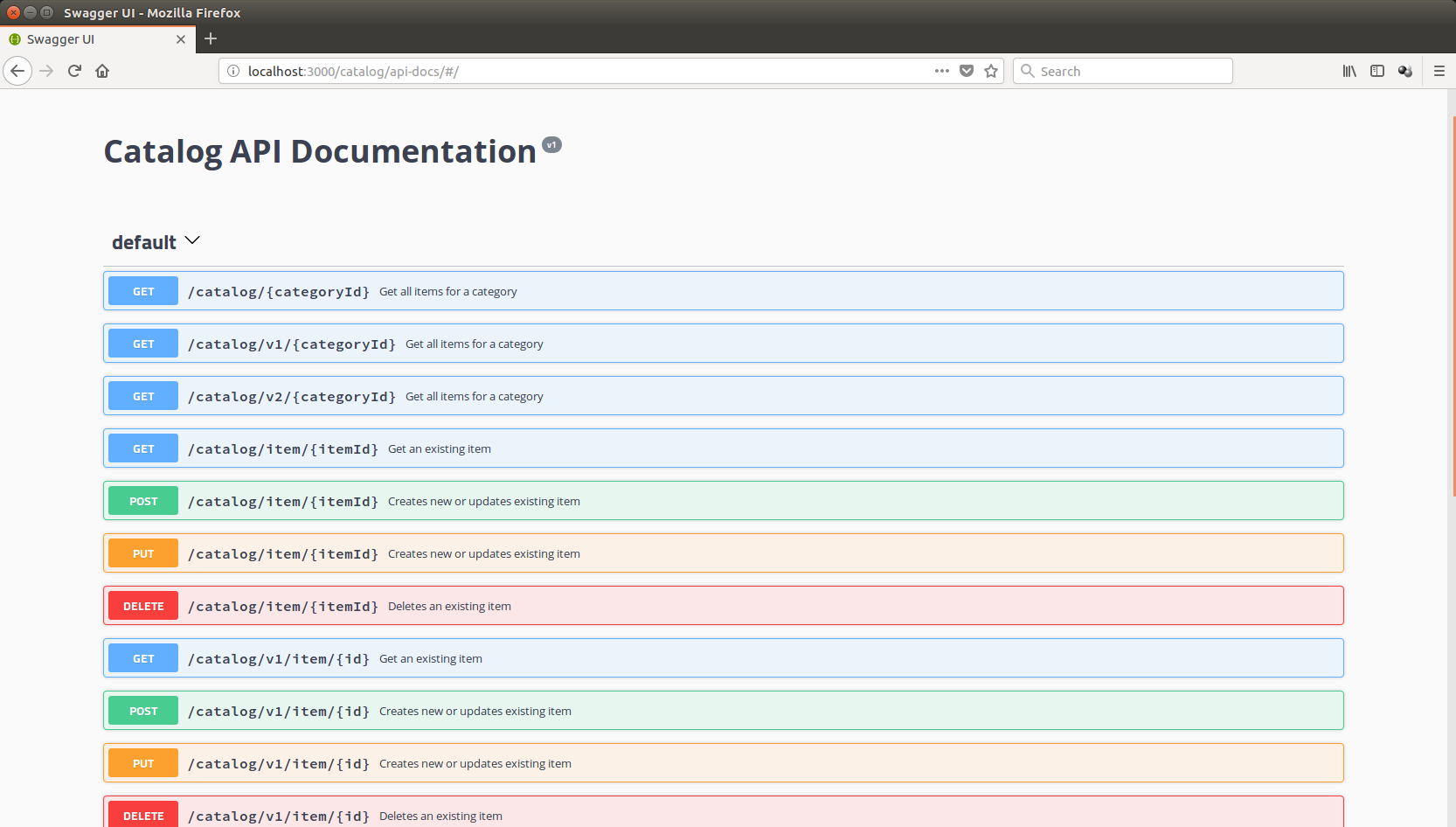Public APIs exposed on the web should be well documented, otherwise it would be difficult for developers to use them in their applications. While WADL definitions might be considered a source of documentation, they address a different problem—the discovery of the service. They serve metadata for the services to machines, not to humans. The Swagger project (https://swagger.io/) addresses the need for neat documentation of RESTful APIs. It defines a meta description of an API from an almost human-readable JSON format. The following is a sample swagger.json file, partially describing the catalog service:
{
"swagger": "2.0",
"info": {
"title": "Catalog API Documentation",
"version": "v1"
},
"paths": {
"/categories/{id}" : {
"get": {
"operationId": "getCategoryV1",
"summary": "Get a specific category ",
"produces": [
"application/json"
],
"responses": {
"200": {
"description": "200 OK",
"examples":
{"application/json": {
"id": 1,
"name": "Watches",
"itemsCount": 550
}
}
},
"404": {"description" : "404 Not Found"},
"500": {"description": "500 Internal Server Error"}
}
}
}
},
"consumes": ["application/json"]
}
The swagger.json file is really straightforward: it defines a name and version of your API and gives a brief description of each operation it exposes, nicely coupled with a sample payload. But the real benefit from it comes in another subproject of Swagger, called swagger-ui (https://swagger.io/swagger-ui/), which actually renders this data from swagger.json nicely into an interactive web page that only provides documentation, but also allows interaction with the service:

We will have a look at and utilize the swagger-ui Node.js module to provide the API that we will develop later in the book, with up-to-date documentation.



























































